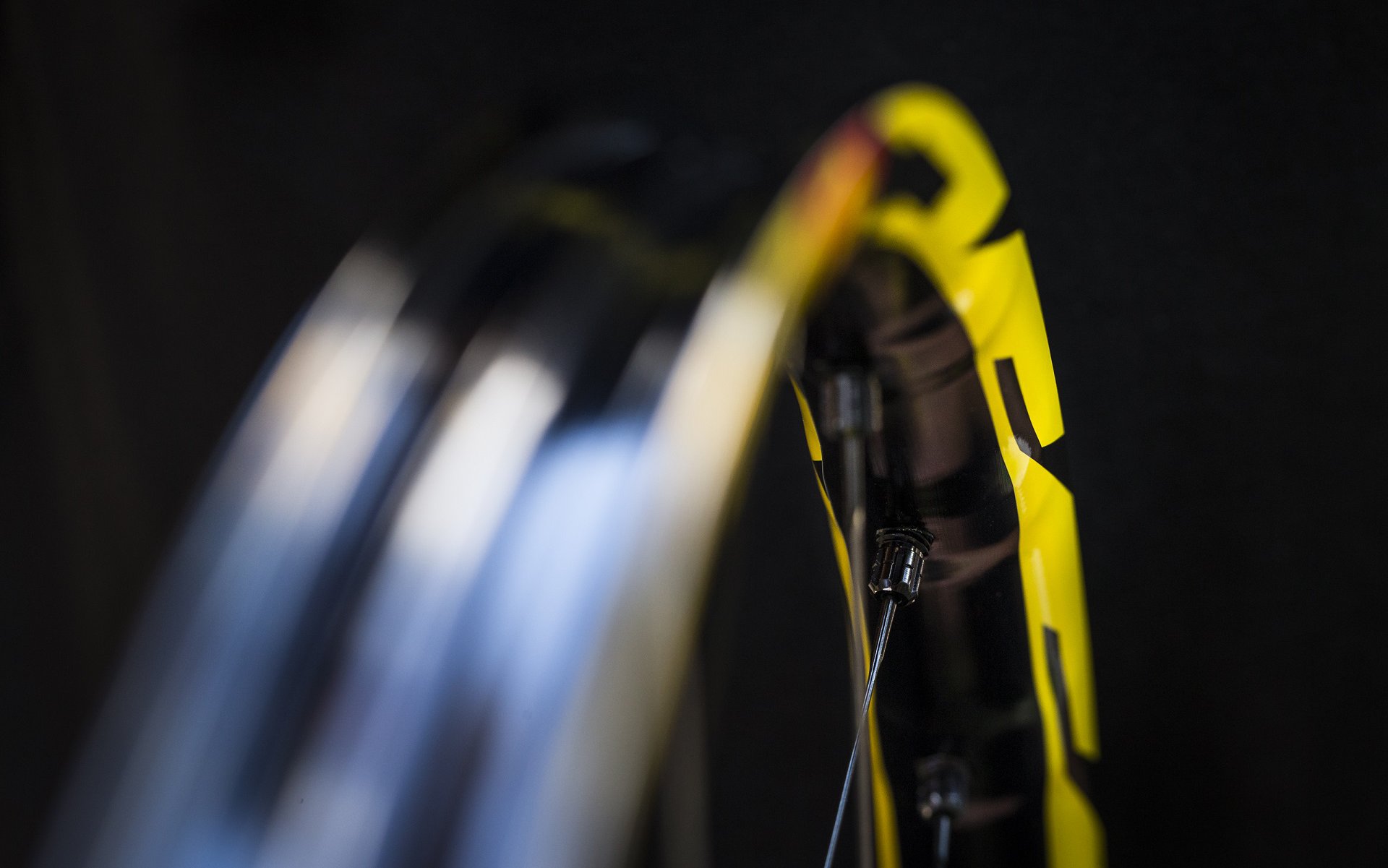
REVIEW | TECH
Do Plus Tires Need Plus Rims?
Press Release Reflections
For over a decade, starting in the mid-90's, Mavic was the only rim brand on my radar. My bikes were adorned with 521 rims that became 721 rims and 321 rims that became 729 rims. They weren't the lightest game in town but nothing came close in terms of manufacturing or material quality and I never wrecked a rim that wasn't totally justified in quitting on me.
As Mavic switched focus to complete wheel systems and I switched to 29'ers we grew apart. And we've stayed that way to this day as the French firm has avoided releasing interesting new products for real trail riding in the 29" size including their new Deemax wheels. But I still have a soft spot for the black-and-yellow brand that's been responsible for launching a range of innovations including anodized rims and tubeless tires. I always make time to read their press releases.
That's exactly what I was doing - reading the press release for their new Deemax wheelsets specifically - when I came across their bold claim that their 28mm internal rims work with tires up to 3" (76mm) wide. Bullsh*t Mavic. Bullsh*t!
Bullsh*t?

I started thinking that Plus tires have come a long way since my first experiences with 2.8" to 3" rubber on <30mm or even <40mm internal rims. Maybe with the current sidewall tech and reduced focus on tire weights performance isn't compromised with the narrower rims‽ Photo: Mavic
Plus Tire Experiences
As with many riders I know, my initial experiences with Plus tires left me unimpressed. I'd long ago switched to 29'ers and had ridden through the entire tire development cycle. Manufacturers had finally realized that there was a thirst for the same aggressive tires that riders love in 26" up-sized to wagon wheels.
I wasn't about to trade in my 29 x 2.3" Maxxis DHF 3C for a smaller-but-wider flat prone 27+ setup that was overly sensitive to tire pressures and offered no performance advantage I could notice.
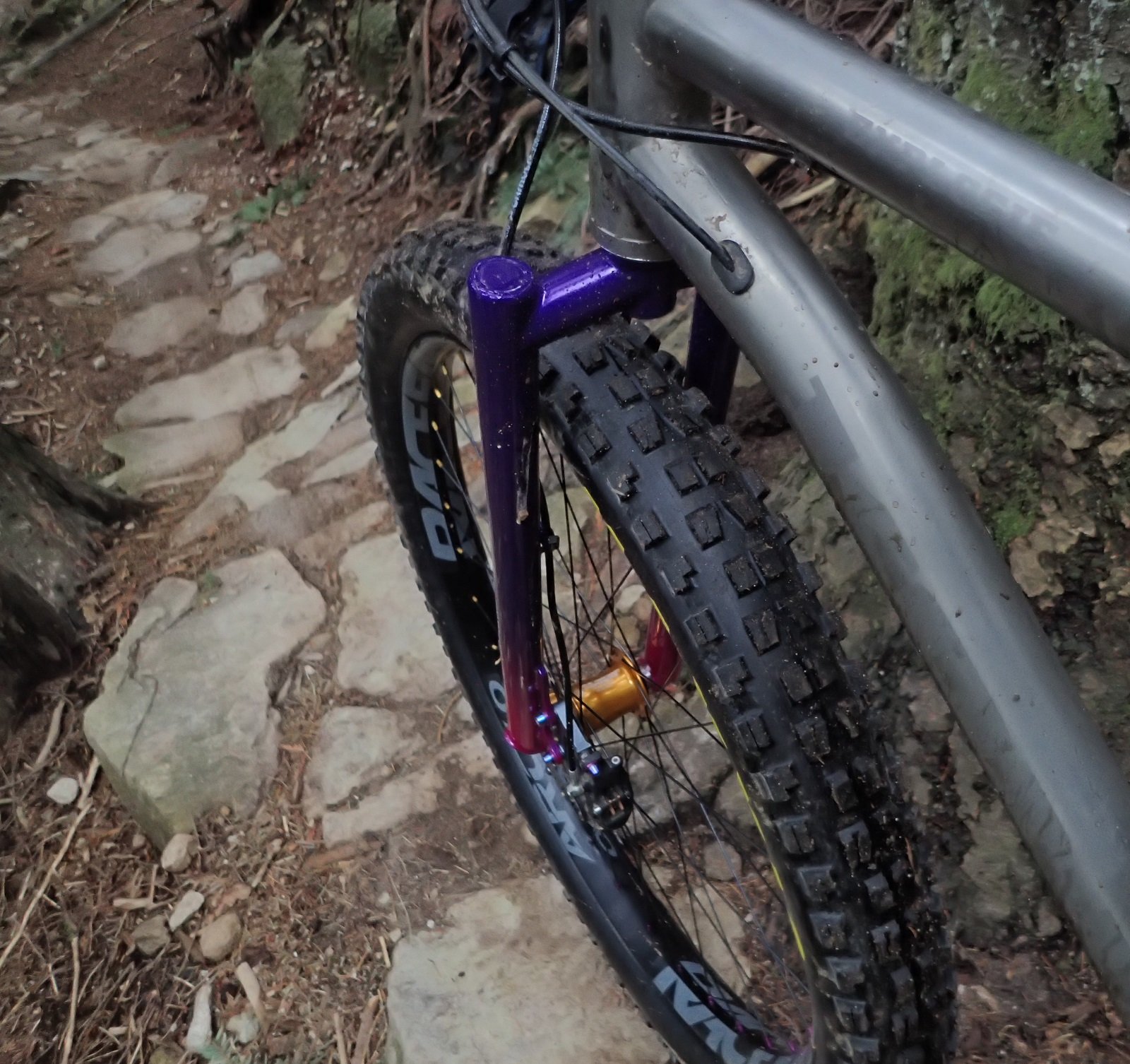
One of my Best of 2016 experiences was with the combo of a Maxxis Minion 29x3" 3C tire and Race Face ARC 40 rim. Traction galore and awesome support.
Then rims started getting wider and wider and Plus tires were better able to support themselves even at lower pressures. At this point it seems tire manufacturers figured out that the Plus size would not be panacea to the masses and they served up beefed up sidewalls, casings and treads to serve the riders most interested in riding big rubber.
29'ers have mounted a new insurgency against efforts to narrowly categorize their usage and now most riders I know running 27+ have multiple wheelsets and are splitting time between Plus and 29". There are still a lot of Plus models being sold, and on the trails, and when it comes to choosing a fresh set of hoops the question of how wide to go on the rims can have ramifications in terms of wheel weight, stiffness, rim and tire durability.
Qualitative Review
Testing Mavic's claim with their own rims/wheels isn't an option since I only own 29ers. Luckily I have access to a Reynolds Black Label with a 28mm internal diameter and my own 29 x 3" Maxxis DHF.
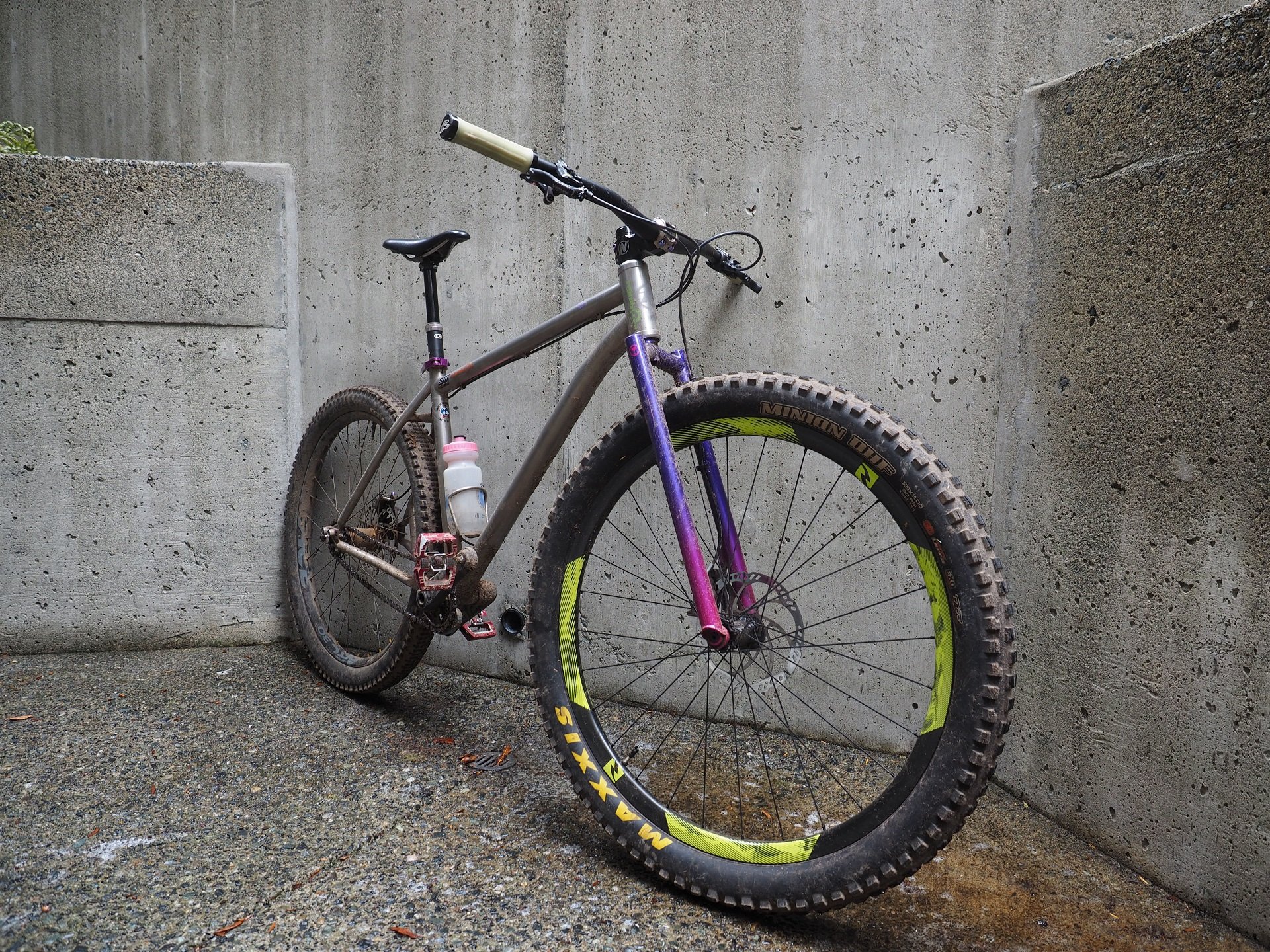
My take away from mounting my 29 x 3" Maxxis DHF on the 28mm internal Reynolds rim is how casually the tire aired up tubeless. It practically pumped itself up and grabbed the bead on the first try. That's a far cry from my experiences mounting the same tire on the much wider Race Face ARC 40 I own and the SUN Duroc 50* on the front of our Trek Stache tester.
My original plan was to grab my calipers and crush this piece quantitatively with some hard numbers and call it scientific. The issue I ran into is that my DHF is so much taller on the Reynolds wheel that my calipers don't reach down far enough to measure the casing at its widest point. Also, the rim is so narrow that it isn't possible to get a comparable height measurement from the top of the rim to the top of the tire.
There's a minimal difference in numbers or appearance when mounting the tire on the 40mm internal Race Face ARC 40 or 46mm internal SUN Duroc 50 rims but the 28mm internal Reynolds is definitely different. The Tire tread is more rounded - although the lean angle to grab the side knobs is still very reasonable - the sidewalls are taller and the casing is correspondingly narrower.
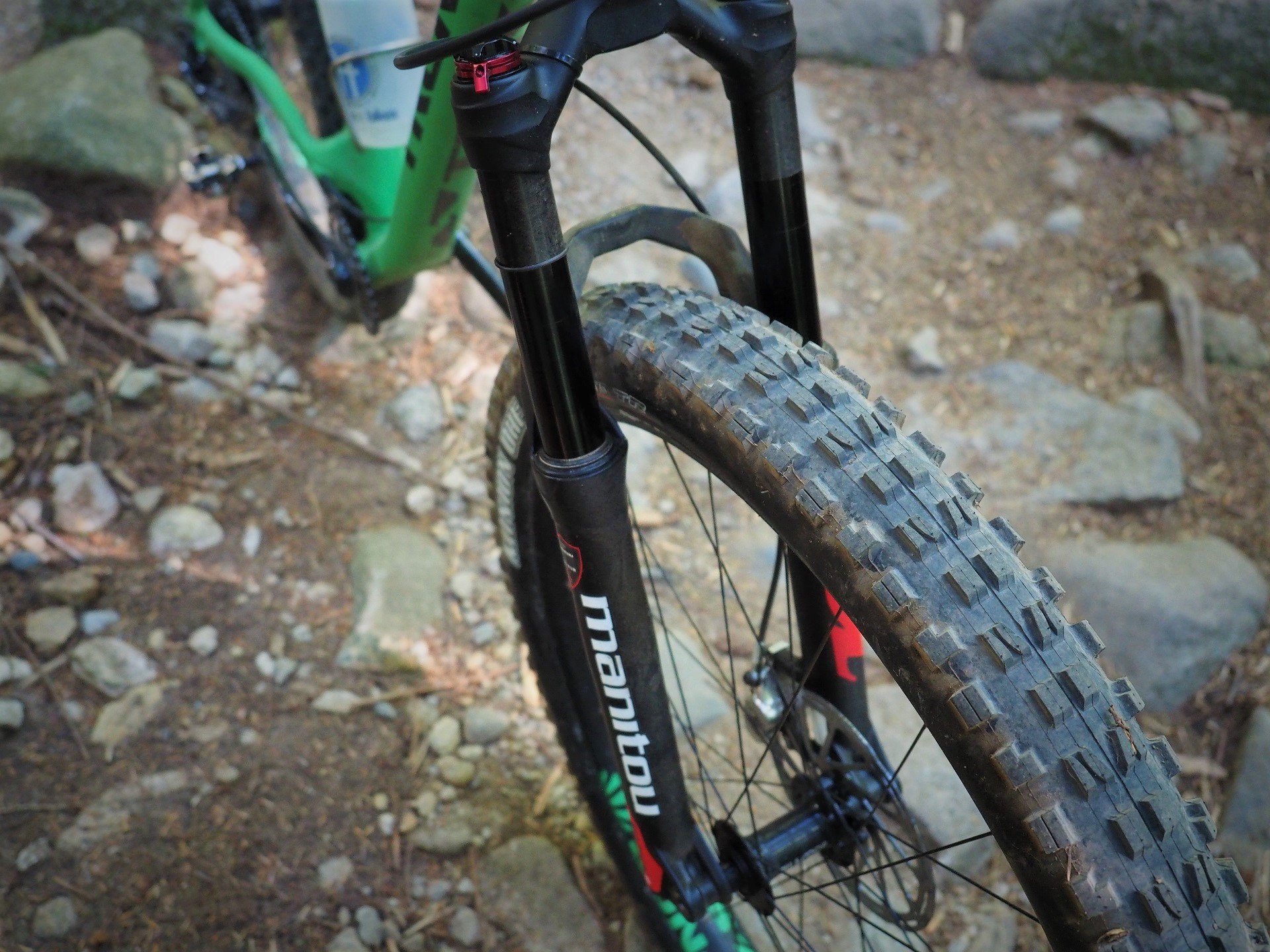
The 3" Maxxis DHF 3C appears larger mounted on SUN's Duroc 50 rims but how does it perform compared to the 28mm internal Reynolds? Look for a re-review of my Trek Stache conclusions and a discussion of potential upgrades coming soon.
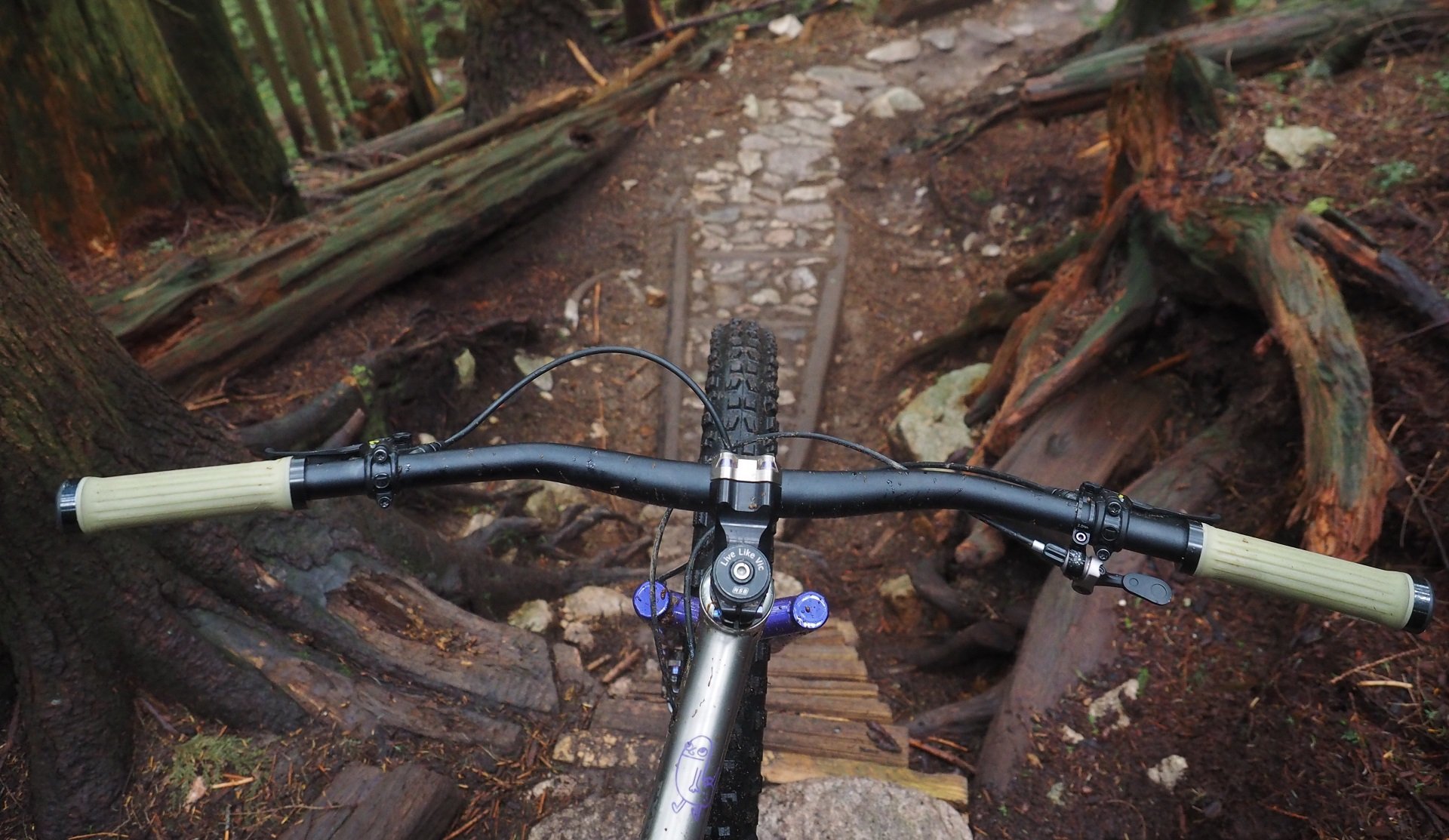
If I look down at my DHF mounted on my ARC 40 rim it is wider than the same tire mounted on the Reynolds Blacklabel rim. Then I ask myself: 'Why are you looking at your tire?! - Look Ahead!'
On The Trail
I managed one dry-and-dusty rip before the trails returned to my favourite snotty, greasy, moist and malicious Shore conditions. It took fifteen minutes to get used to leaning my bike over farther to engage the side knobs of the Minion and maybe I can say it had a bit more bite and a bit less flotation once I dialed in the air pressure to comfort ratio with the Reynolds setup.
Comfort is reduced a bit as I'm forced to run more air pressure to negate tire squirm when cornering. It's enough of a change that I'd have to weigh pros and cons in buying a new rim but if my bike already had 28mm+ internal hoops I would happily run that setup without paying any mind to a swap.
I find straight line braking is marginally affected. In the worst situations it's better with the flatter and fatter tire profile and comfort is also reduced as again I have to run more air pressure. The trade off is I've had significantly fewer bottom outs with the taller tire profile and slight pressure increase.
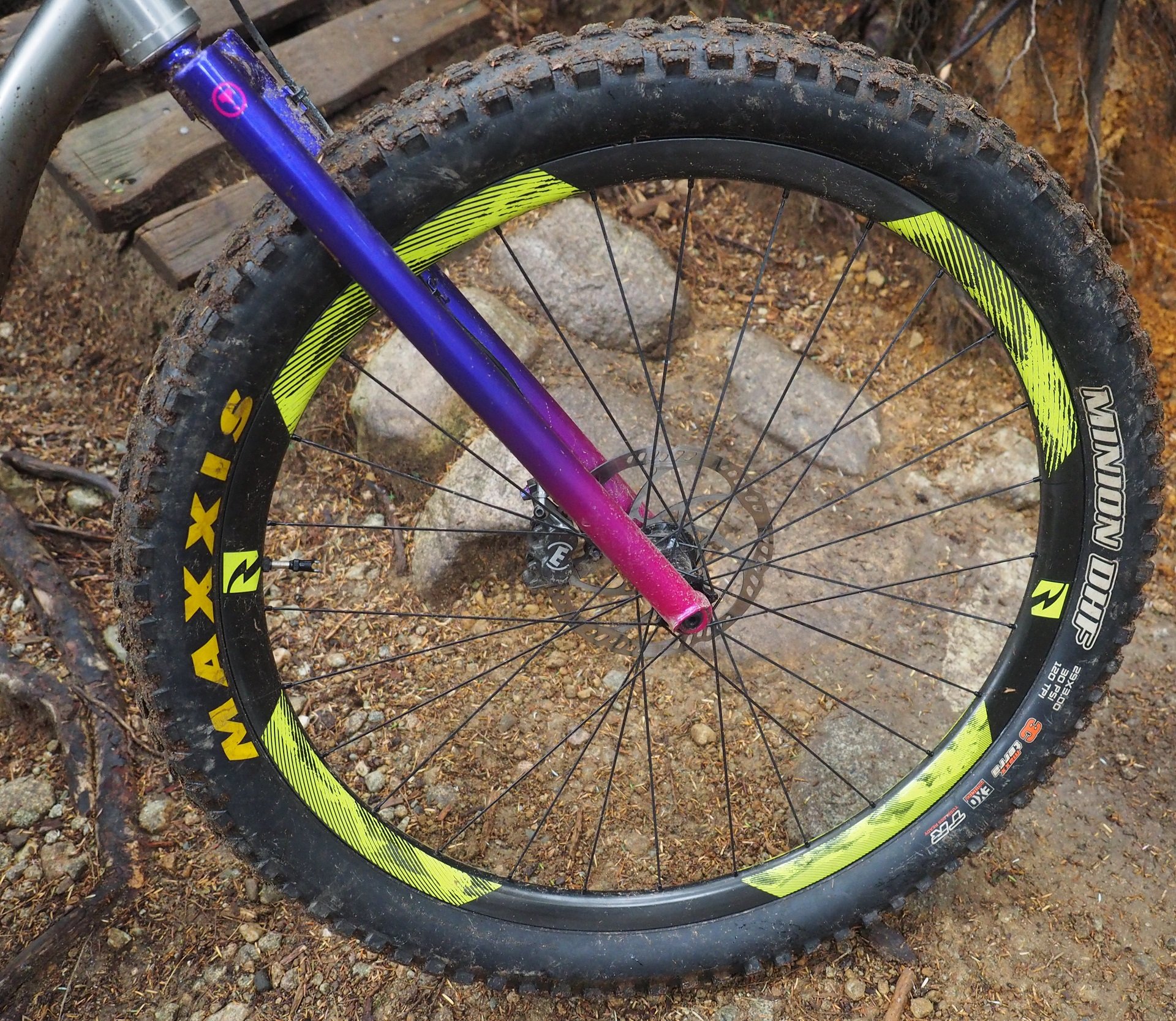
Weight wise it isn't fair to compare a carbon Reynolds rim to an aluminum Race Face rim. But even staying within Race Face's ARC lineup it's a 100 gram weight penalty to go from an ARC 30 to an ARC 40.
I've only tested this theory with one tire but for aggressive riding I think Maxxis owns the Plus tire market with their 2.8" and 3" DHF 3C and I can only imagine that any similarly beefed up tire would provide similar results. My conclusion is that Mavic is correct that a 28mm internal rim is (now!) perfectly usable with a 3" Plus tire with the caveat that it has to have properly aggressive sidewalls like the rubber I'm riding.
I'm a bit torn on whether I prefer the slight increase in comfort, traction and less pressure-sensitive performance riding my ARC 40 rim or the lighter weight and improved rim protection I get from running a narrower option. I'm in no hurry to go through the process of swapping the tire back and that probably speaks at the loudest volume in answering Mavic's rim width claim.
For more information on Mavic's new Deemax Pro wheels (boost and non-boost), check here.
*The SUN Duroc 50 has a 46mm internal rim width where the Race Face ARC 40 has a 40mm internal rim width.
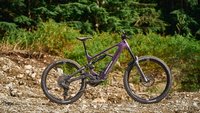
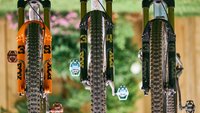


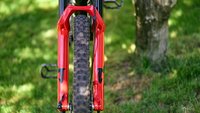
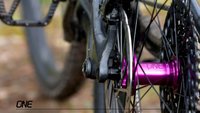
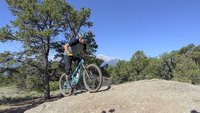
Comments
Niels van Kampenhout
6 years, 10 months ago
I'm also wondering about DHF 2.5 WT on 25 mm rims.
Reply
Andrew Major
6 years, 10 months ago
I've run a 2.4 DHR 2 WT on an old Stan's Flow - that's pretty close casing/internal width combo.
It was a great pairing.
Reply
AndreiV.
6 years, 10 months ago
I run that set up and it's great on flatter corners, but a bit squirmy on berms (where the lean angle of your bike in relation to the trail is not as aggressive).
Reply
Andrew Major
6 years, 10 months ago
What range of tire pressure do you run?
I do tend to run my tires on the firm end (2.4 DHR II WT = 28-30psi) which definitely changes how stance on the rim affects support/squirminess.
Thanks!
Reply
AndreiV.
6 years, 10 months ago
25(ish) front - 28(ish) back. I say "ish" because I just use a CCM bike pump with barely discernable increments.
I've tried 30 in the rear and it feels quite harsh. I'll definitely try more pressure on the front though.
Reply
Shrockie
6 years, 10 months ago
Hey Niels.
I have 25mm internal rims with a 2.5 DHF WT on front and 2.4 DHR2 WT on the back. They are Amazing!
I had 2.3 DHF and 2.3 HR2 and they felt drifty compared to my 2.5's from my 26" bike.. so put the 2.5" DHF WT on the front, and I could really feel that the 2.3 HR2 in back was breaking loose, where the DHF WT was holding tight on the front.. Put the DHR2 WT on the back, it was a match made in heaven.
I do aggressive riding in Norther California, rocky, downieville, etc. .. They are great and the exo sidewalls are great.. I run 22 psi front, 27 rear.
I hope this helps
Reply
Niels van Kampenhout
6 years, 10 months ago
Thanks, great info, especially the comparison with 2.3s on the same rims as that's what I have now. I run similar pressures. I also lived in NorCal and rode in Downieville (long time ago, need to get back there sometime!) so I know how those trails compare to the Shore. I think I'll give the WTs a try this fall/winter.
Reply
Dave Waddell
6 years, 10 months ago
I've been running MKII Stans Flow Ex with DHF 2.5 WT. So far so good. The only thing I noticed was increased grip and slackened head angle as the outer diameter is (actually noticeably) larger !
Reply
AndrewR
6 years, 10 months ago
On a cost to performance ratio Specialized own the 2.8" plus tyre market with the Butcher Grid.
The only plus tyre to come in a 42 durometer compound (over a 70 base for support), essentially the same tread pattern as the DHF and the GRID sidewall for a little more support and less side wall punctures/ slashes, 1010 grams and all for $20 cheaper than the Maxxis (most of the time). As much as I dislike promoting anything from the Big S they have hit the nail on the head with this tyre.
Reply
Andrew Major
6 years, 10 months ago
I love the Butcher & Slaughter Grid tires.
I wish the 2.8 Butcher and 2.6 Slaughter were available as 29'er tires. I'd run them for sure - especially as locally they're a decent bit cheaper than Maxxis/Schwalbe.
Reply
mel22b
6 years, 10 months ago
I've run 2.5 Minion WT on Ibis 741 (35mm) and the difference from a normal rim width and a 2.3 Minion was enormous. I would say with our wet conditions, it was the best upgrade I've done in years. Honestly feels like you're cheating it makes riding so much easier.
Reply
Andrew Major
6 years, 10 months ago
I had the same feeling re. switching to the Minion WT but it's across the board. have you had the chance to ride the WT on a narrower rim (28-30mm or even 24mm-ish)?
Curious to what extent it's rim width and to what extent it's tire.
The 29x3" DHF was a Plus sized revelation for me. I'm certainly not saying 28mm internal is the ideal, simply that a Plus tire with good sidewall support can work very well with this setup (and it's easy to air up tubeless on a narrower rim).
Reply
mel22b
6 years, 10 months ago
I have not. I just built up a Wreckoning with 30mm wheels and am running the Minion 2.5WT and the setup with the 29er wheels is even better than the 27.5 Ibis setup on my last bike. Take a little more to get them moving from a stop, but once they are going, they just keep going and going. I think you could get away with thinner rims but no way you could get away with the lower PSI of the wider.
Reply
Andrew Major
6 years, 10 months ago
Narrower rims definitely make tire pressures much more sensitive.
Enjoy your Wrechoning!
Reply
Shrockie
6 years, 10 months ago
I flat out didn't like the 2.3" DHF (EXO , 3c) on the front (25mm wheels).. it was breaking loose on fast flat turns. Tried it for 2 rides and took it off and got the 2.5 DHF WT. SO much better..
that's when I noticed the 2.3 HR2 didn't match the grip that the 2.5 DHF WT had.. so I got a matching DHR2 WT for the back.. super happy with them both.
I have not tried them on wider rims, not sure they're needed.. Even though the WT is "supposed to be" for 30-36mm rims.. they're damn good on 25mm.
Reply
Shredman69
6 years, 9 months ago
For best results, plus size tires belong on wide rims designed for plus tires. Better sidewall support, lower pressures can be run with no burping or tire squirm and more traction/comfort and small bump compliance. Skinney rims with plus tires defeats the benifets of the plus tires. It's just stupid. Don't do it. Maxxis lists the minimum internal rim width at 39mm for their 2.8 tires for a reason.
Reply
Please log in to leave a comment.